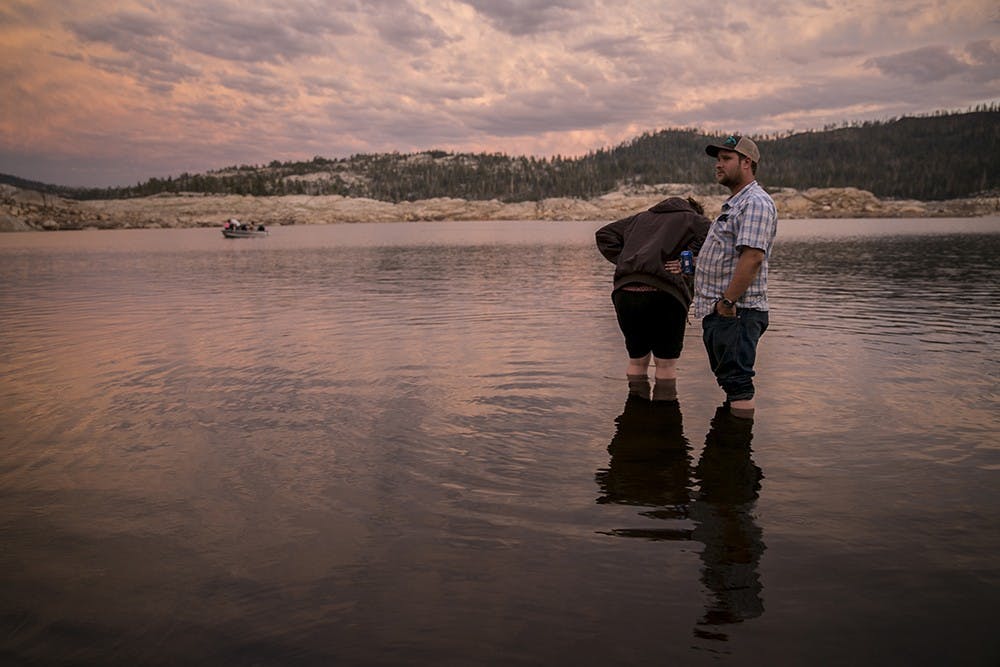When Gov. Jerry Brown (D-California) announced in April that his state would impose the most stringent water-rationing policies in the nation aimed at reducing residential water consumption by 25 percent, critics scoffed at the plan.
For a state with nearly 40 million residents to reduce water consumption by a quarter — or approximately 400 billion gallons of water — would require an unprecedented effort. Yet to the surprise of many, the State Water Resources Control Board recently announced that Californians did just that. California met the reduction target for the month of June, and also surpassed it. Residential water consumption declined by more than 27 percent in June and was preceded by similar reductions in May.
These reductions represent a minimal cut in water usage nationally, but are a significant victory for conservationists nonetheless. Through aggressive marketing campaigns and an influx in funding, the state of California was able to get the general public on board for a massive conservation project.
“Every year, the bully asks for more and more:” http://t.co/AXwR10QNrv pic.twitter.com/AMnD2jfgcv
— ClimateCentral (@ClimateCentral) August 26, 2015
Given the success of residential water rationing in California, it is time for Arizonans to seriously consider implementing similar programs here in the Grand Canyon State.
To its credit, Arizona is one of the best-prepared states for drought in the nation. As early as 1980, the state legislature enacted policies to support water conservation and sustainable water supply. The state legislature has been responsive to the severe drought affecting California. The state Senate’s Energy and Natural Resources Committee met in June to discuss the state’s preparations for extreme drought in light of California’s water crisis.
Equally significant, residential water consumption constitutes a mere fraction of the water used in agriculture in Arizona and California. Certain crops, such as alfalfa, consume inordinate amounts of water and deplete our state's water reserves.
But if the state of Arizona does not take proactive steps now, the severity of the current drought may only worsen. For more than 15 years Arizona has been stuck in a prolonged drought, according to the U.S. Drought Monitor and Arizona Department of Water Resources.
This year, the drought is slightly less severe than 2014, but water levels in some of the state's most significant reservoirs, such as Lake Mead and the Colorado River, have gone down and are only expected to decline further.
According to the Environmental Protection Agency’s 2015 Drought Disaster Update, every county in Arizona is affected by drought (as was the case in 2014). The majority of the state has seen a one to two degree temperature increase from 2000-2014, both groundwater and subterranean water sources are decreasing, and climate change may continue to wreak havoc the decreasing snowfalls that currently supply the Colorado River.
Residential water rationing may only make a marginal difference in the state’s water supply. But even the most marginal difference becomes significant in the face of global warming’s continuous impact on the Southwest.
The fact of the matter is one strong El Niño or good snowfall is not going to undo the catastrophic impact of climate change on the American Southwest. Precipitation is declining, our state’s population is increasing, and water is scarce in the desert: We need to take action now.
Although Arizona’s drought is not presently as severe as California's, even a minimal state-mandated reduction in residential water use could save the state millions of gallons of water. While some may contend reducing water consumption should be an individual choice, California’s successful reduction campaign shows that state intervention can produce results. Arizona must take decisive, proactive measures now to ensure a sustainable future for our great state.
Related Links:
Extreme droughts prove real action is needed on climate change
Hardy Arizonans can overcome drought predictions
Reach the columnist at clmurph5@asu.edu or follow @ConnorLMurphy on Twitter.
Editor’s note: The opinions presented in this column are the author’s and do not imply any endorsement from The State Press or its editors.
Want to join the conversation? Send an email to opiniondesk.statepress@gmail.com. Keep letters under 300 words and be sure to include your university affiliation. Anonymity will not be granted.
Like The State Press on Facebook and follow @statepress on Twitter.




